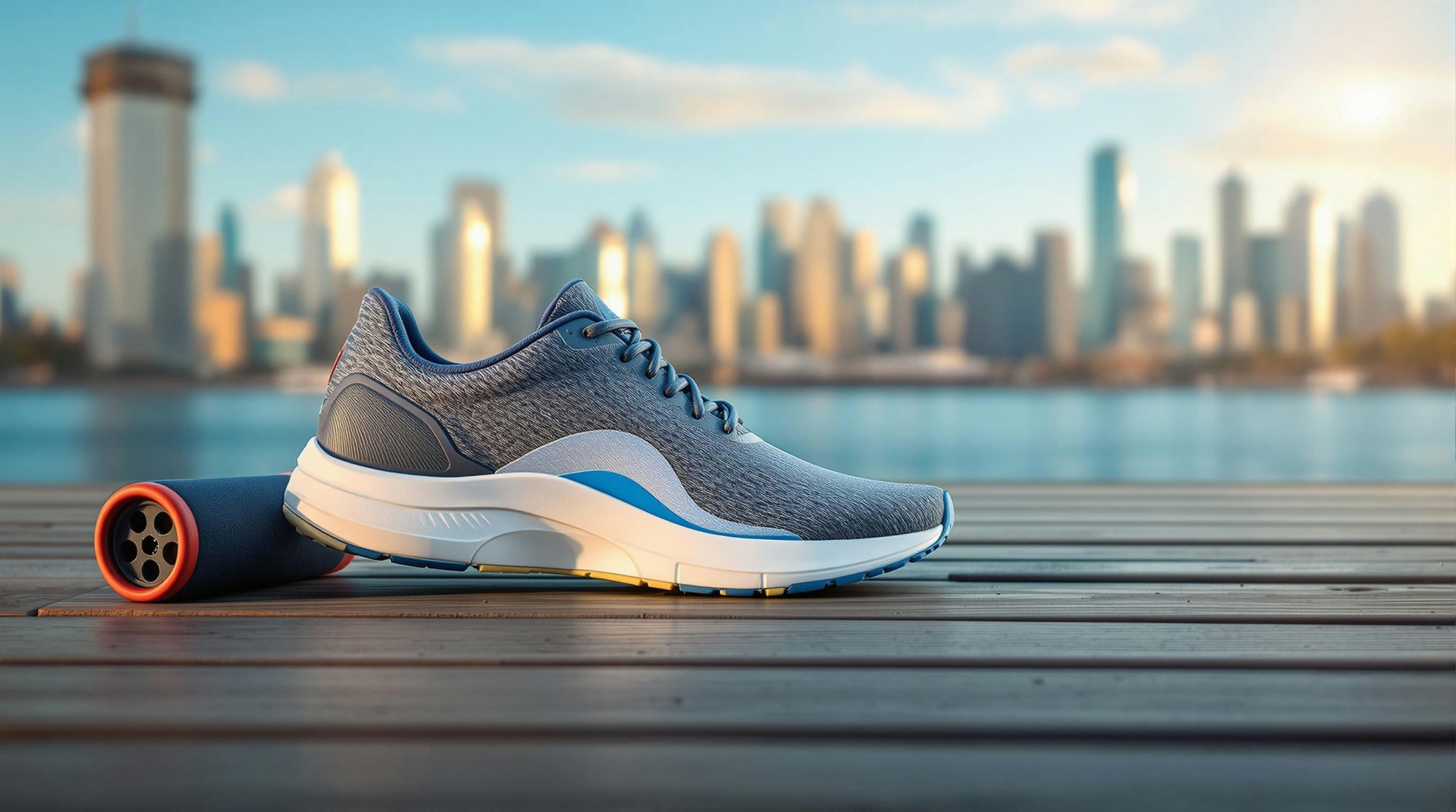Managing Plantar Fasciitis: A Step-by-Step Recovery Guide for Toronto Professionals
Managing Plantar Fasciitis: A Step-by-Step Recovery Guide for Toronto Professionals
Foot pain can transform a simple walk to a meeting or a morning jog through High Park into an uncomfortable ordeal. For active Toronto professionals and running enthusiasts, plantar fasciitis can be particularly disruptive—turning each step into a painful reminder of this common but treatable condition.
At Care& Family Health, we regularly see busy professionals whose active lifestyles have been sidelined by this persistent heel pain. Whether you’re rushing between meetings in the Financial District or training for the Toronto Waterfront Marathon, understanding plantar fasciitis is the first step toward effective recovery.
Table of Contents
- What Is Plantar Fasciitis?
- Recognizing the Symptoms
- Why Toronto Professionals Are Susceptible
- The Runner’s Risk: Why Runners in Toronto Need to Be Vigilant
- Diagnosing Plantar Fasciitis
- Recovery: A Comprehensive Approach
- A Toronto Professional’s Recovery Timeline
- Prevention: Keeping Plantar Fasciitis at Bay
- When to Seek Medical Care
- Balancing Recovery with an Active Toronto Lifestyle
- Success Story: A Toronto Marathon Runner’s Recovery
- Conclusion
- FAQ: Managing Plantar Fasciitis
What Is Plantar Fasciitis?
Plantar fasciitis is an inflammation of the plantar fascia—a thick band of tissue that runs across the bottom of your foot, connecting your heel bone to your toes. This tissue supports the arch of your foot and absorbs shock when you walk, run, or jump.
When the plantar fascia experiences excessive tension and stress, small tears can develop in the tissue. Repeated stretching and tearing causes the fascia to become irritated and inflamed, leading to the characteristic heel pain that defines this condition.
Recognizing the Symptoms
The most distinctive sign of plantar fasciitis is a stabbing pain near the heel, typically most intense with the first steps after waking or after long periods of sitting. For Toronto professionals who spend hours at a desk before rushing to catch the subway, this pain pattern can be particularly noticeable.
Common symptoms include:
- Sharp pain in the bottom of the foot near the heel
- Pain that’s worst in the morning or after periods of rest
- Discomfort that improves slightly with activity but worsens after extended periods on your feet
- Increased pain after (not during) exercise
- Tenderness when pressing on the affected area
Why Toronto Professionals Are Susceptible
The urban professional lifestyle in Toronto creates a perfect storm of risk factors for plantar fasciitis:
Long commutes and standing: Whether you’re standing on the TTC or walking between meetings downtown, urban professionals often spend hours on their feet on hard surfaces.
Desk-bound work followed by exercise: Transitioning from sitting all day to intense evening workouts can shock the plantar fascia, especially without proper warming up.
Improper footwear: Dress shoes with minimal support worn throughout the workday can contribute to fascia strain.
Weekend warrior syndrome: Sedentary weekdays followed by active weekends running along the waterfront or hiking in Rouge National Urban Park can overtax unprepared foot tissues.
The Runner’s Risk: Why Runners in Toronto Need to Be Vigilant
Toronto’s vibrant running community faces specific challenges when it comes to plantar fasciitis. Whether training along the Martin Goodman Trail or tackling the hills of Cedarvale Park, runners place repetitive stress on the plantar fascia.
Risk factors unique to runners include:
Training intensity: Suddenly increasing mileage, especially when preparing for events like the Toronto Scotiabank Marathon.
Surface changes: Transitioning between Toronto’s varied running surfaces—concrete sidewalks, asphalt roads, rubber tracks, and trail systems.
Seasonal adaptations: Adjusting running styles for winter ice or summer heat can alter biomechanics.
Worn footwear: Running in shoes past their effective lifespan (typically 500-700km).
Experiencing Foot Pain? Book a Same-Week Appointment
Don’t let plantar fasciitis interrupt your active lifestyle. Care& Nurse Practitioners can provide personalized diagnosis and treatment plans with convenient same-week appointments.
Diagnosing Plantar Fasciitis
While many cases of plantar fasciitis can be self-diagnosed based on symptoms, persistent pain warrants professional evaluation. A healthcare provider can determine if your heel pain is truly plantar fasciitis or another condition with similar symptoms, such as a stress fracture or heel spur.
During an assessment, a healthcare provider will typically:
- Examine your foot and observe your standing and walking patterns
- Discuss your symptoms and activity levels
- Press on the affected area to pinpoint the location of pain
- Check your ankle reflexes and muscle strength
- Review your footwear
In some cases, imaging tests like X-rays or MRIs might be recommended to rule out other causes of heel pain, but these are not usually necessary for diagnosing plantar fasciitis.
Recovery: A Comprehensive Approach
Recovering from plantar fasciitis requires patience and consistency. For active professionals in Toronto, the key is implementing a strategic recovery plan that fits into your busy lifestyle. The good news is that over 90% of plantar fasciitis cases improve with conservative treatment within 10 months.
Immediate Relief Strategies
Rest: Reduce activities that aggravate your symptoms. This doesn’t mean complete inactivity, but rather modifying your routine to minimize stress on the plantar fascia.
Ice application: Apply ice to the painful area for 15-20 minutes, 3-4 times daily, especially after activity. A frozen water bottle rolled under the foot can provide both ice therapy and gentle stretching.
Pain management: Over-the-counter anti-inflammatory medications like ibuprofen can help reduce pain and inflammation. However, these should be used as directed and not as a long-term solution.
Supportive footwear: Even at home, wear supportive footwear rather than walking barefoot on hard surfaces. This is particularly important for those first painful steps in the morning.
Essential Stretches and Exercises
Consistent stretching and strengthening exercises form the cornerstone of plantar fasciitis recovery. Here’s a daily routine that takes just minutes but delivers significant benefits:
Plantar Fascia Stretch:
- Sit down and cross the affected foot over your knee
- Pull your toes back toward your shin until you feel a stretch in the arch
- Run your thumb along the plantar fascia from heel to toes
- Hold for 10 seconds, repeat 10 times per session, 3 sessions daily
Calf Stretches:
- Stand facing a wall with your hands on the wall at eye level
- Place the affected foot behind your other foot
- Keep your back heel on the floor and bend your front knee until you feel a stretch in the back leg
- Hold for 15-30 seconds, repeat 4 times, several times daily
Towel Scrunches:
- Sit in a chair with a towel on the floor under your feet
- Scrunch the towel toward you using only your toes
- Repeat 20 times, 3 times daily
Marble Pickup:
- Place marbles on the floor and pick them up with your toes
- Transfer them to a bowl or container
- Aim for 20 pickups, twice daily
Footwear and Support Solutions
The right footwear can dramatically impact recovery, especially for Toronto professionals who transition between professional attire and workout gear.
For the Office:
- Choose dress shoes with arch support when possible
- Consider adding orthotic inserts to professional footwear
- Keep a pair of supportive shoes at work for walking between meetings or commuting
For Running:
- Visit specialized running stores in Toronto like The Running Room or BlackToe Running for gait analysis
- Select shoes with proper arch support and cushioning
- Replace running shoes regularly based on mileage, not appearance
Supportive Devices:
- Night splints keep the plantar fascia stretched overnight, preventing morning pain
- Custom or over-the-counter orthotic inserts provide arch support throughout the day
- Compression socks can improve blood flow and reduce inflammation
Advanced Treatment Options
For persistent cases, more targeted interventions may be necessary:
Physical Therapy: Professional guidance can ensure you’re performing exercises correctly and may include specialized treatments like ultrasound or iontophoresis.
Athletic Taping: Specialized taping techniques can support the plantar fascia during recovery, especially beneficial for runners.
Extracorporeal Shock Wave Therapy: This non-invasive treatment uses sound waves to stimulate healing in the plantar fascia.
Steroid Injections: While not a long-term solution, corticosteroid injections can provide temporary pain relief in severe cases.
PRP Injections: Platelet-rich plasma injections use components of your own blood to potentially accelerate healing.
Surgery is rarely needed and typically considered only after 6-12 months of conservative treatment fails to provide relief.
Track Your Recovery Progress with the Care& App
Monitor your plantar fasciitis recovery, track pain levels, and share progress with your healthcare provider through our secure mobile app.
A Toronto Professional’s Recovery Timeline
Recovery from plantar fasciitis is rarely linear, and realistic expectations are important. Here’s what most patients can anticipate:
Weeks 1-2
Focus on reducing inflammation through rest, ice, and supportive footwear. Pain may begin to decrease slightly.
Weeks 3-6
Consistent stretching and strengthening should begin to yield noticeable improvements. Morning pain may decrease in intensity.
Months 2-3
With continued adherence to the treatment plan, many experience significant pain reduction. Gradual return to normal activities can begin.
Months 4-6
Most people see substantial improvement, though complete resolution may take longer. Activity levels can increase with proper precautions.
Months 6-10
The majority of patients have recovered, though occasional flare-ups may occur, especially with increased activity.
Prevention: Keeping Plantar Fasciitis at Bay
For Toronto’s active professionals and runners, preventing recurrence is crucial once you’ve recovered. These strategies help maintain foot health while supporting your active lifestyle.
Preventive Strategies for Professionals
Workstation assessment: Ensure your desk setup allows proper foot positioning. Feet flat on the floor or on a supportive footrest reduces strain.
Movement breaks: Set a timer to stand up and stretch every hour during long workdays.
Commuter considerations: If you walk to work or between meetings, wear supportive shoes and save dress shoes for the office.
Standing desk adaptations: If using a standing desk, place a cushioned mat underneath and alternate between sitting and standing.
After-work transition: Change to supportive footwear before your evening commute or workout, especially after a day in dress shoes.
Prevention for Toronto Runners
Toronto’s running community enjoys diverse routes year-round, from the Don Valley trails to the Beltline. These preventive measures help protect your plantar fascia while maintaining your running routine:
Progressive training: Follow the 10% rule—never increase weekly mileage by more than 10% from one week to the next.
Surface awareness: Mix your running surfaces. Toronto offers everything from cushioned tracks at Central Tech to trails in Sunnybrook Park—variety reduces repetitive strain.
Year-round adaptations:
- In winter: Shorter stride length on icy surfaces
- In summer: Earlier or later runs to avoid pavement heated by the day’s sun
Cross-training: Incorporate low-impact activities like swimming at community centers or cycling along Toronto’s extensive bike lane network.
Post-run ritual: Stretch thoroughly after runs and consider ice application, especially after longer distances.
Running shoe rotation: Maintain 2-3 pairs of running shoes and alternate between them to vary the stress on your feet.
Toronto-specific tip: Be mindful of the camber (side slope) of roads, particularly on routes like Bayview Avenue or Mt. Pleasant Road. Frequently changing sides balances foot stress.
Need Personalized Prevention Advice?
Care& Nurse Practitioners can develop a customized prevention plan based on your specific foot mechanics, activity level, and lifestyle needs.
When to Seek Medical Care
While many cases of plantar fasciitis respond well to self-care, certain situations warrant professional medical attention. Consider consulting a healthcare provider if:
- Pain is severe or doesn’t improve after several weeks of consistent home treatment
- Pain comes on suddenly and is intense
- You experience numbness or tingling in your foot
- You have diabetes and any foot pain or problems
- You develop heel pain accompanied by fever, redness, or warmth in your foot
A healthcare provider can offer a comprehensive assessment and personalized treatment recommendations. At Care& Family Health, our Nurse Practitioners provide thorough evaluations and develop customized recovery plans that account for your specific lifestyle demands and health goals. Unlike rushed appointments elsewhere, our unrushed approach ensures we fully understand your condition and can address all your questions and concerns.
Balancing Recovery with an Active Toronto Lifestyle
One of the most challenging aspects of plantar fasciitis recovery is maintaining fitness while allowing healing. Toronto offers numerous alternatives that can keep you active without aggravating your condition:
Water-based activities
Utilize Toronto’s public pools for swimming or aqua jogging—excellent non-impact cardio options.
Cycling
Explore Toronto’s expanding network of bike lanes and trails for a foot-friendly workout.
Upper body focus
Many of Toronto’s parks feature outdoor fitness equipment where you can maintain strength without foot strain.
Modified yoga
Studios throughout the city offer classes that can be adapted to minimize foot pressure while maintaining flexibility.
Winter alternatives
During colder months, consider indoor rowing machines or ellipticals at community centers as low-impact options.
Remember that maintaining cardiovascular fitness during recovery will make your return to running or other activities smoother once healed.
Success Story: A Toronto Marathon Runner’s Recovery
Sarah, a financial analyst and dedicated runner preparing for the Toronto Waterfront Marathon, developed plantar fasciitis three months before race day. Rather than pushing through the pain—a common but counterproductive approach—she sought medical guidance and implemented a strategic recovery plan.
By combining consistent stretching, temporary activity modification, proper footwear, and guided physical therapy, Sarah was able to gradually return to training. While she adjusted her race goal from a personal best to comfortable completion, she successfully finished the marathon without pain recurrence.
The key to her success was early intervention, adherence to her treatment plan, and patience with the recovery process—valuable lessons for anyone facing this condition.
Conclusion
Plantar fasciitis can be frustrating, especially for active Toronto professionals and runners who value their mobility and fitness routines. However, with proper understanding, consistent treatment, and preventive strategies, most people achieve full recovery and return to their desired activities.
The journey to recovery requires patience and consistency, but each step without pain brings you closer to resuming the activities you love—whether that’s running along Toronto’s waterfront, hiking the city’s ravine systems, or simply walking comfortably through your busy workday.
If persistent foot pain is affecting your quality of life or limiting your activities, consider consulting with a healthcare provider who can provide personalized guidance and support throughout your recovery journey. At Care& Family Health, our Nurse Practitioners offer comprehensive care for conditions like plantar fasciitis, with the convenience of same-week appointments through our mobile app and the benefit of unrushed visits to fully address your concerns.
Take the First Step Toward Pain-Free Movement
Don’t let plantar fasciitis limit your active Toronto lifestyle. Our Nurse Practitioners provide comprehensive assessment and personalized treatment plans to get you back on your feet.
FAQ: Managing Plantar Fasciitis
Less Wait Time, More Face Time
Visit www.careand.ca to register
Disclaimer: This article is for informational purposes only and does not constitute medical advice. Always consult with a qualified healthcare provider for personal medical guidance. The information provided is general in nature and may not apply to individual circumstances.







